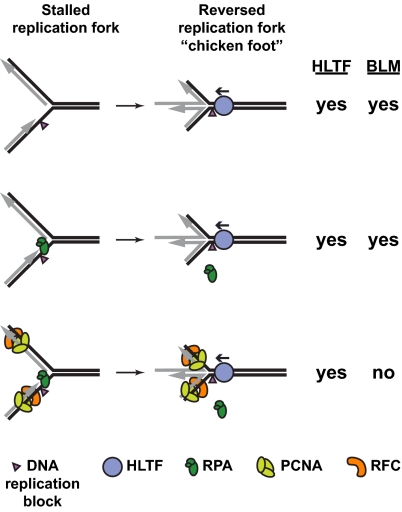Fig. 1.
Fork reversal and protein clearing activities of HLTF and BLM. With help from enzymes such as HLTF and BLM, replication blocked on the leading strand can result in a “template switch” whereby the newly synthesized strands (gray) dissociate from their templates (black) and anneal with each other to produce the “chicken foot” structure shown. This facilitates bypass of the block because leading strand DNA synthesis can continue using the undamaged sister chromatid as a template. Whereas HLTF can promote reversal of naked, RPA- and PCNA/RFC-bound model replication forks in vitro, BLM is able only to reverse the naked and RPA-bound forks (2). Blockage of lagging strand replication is dealt with by other mechanisms (1).

